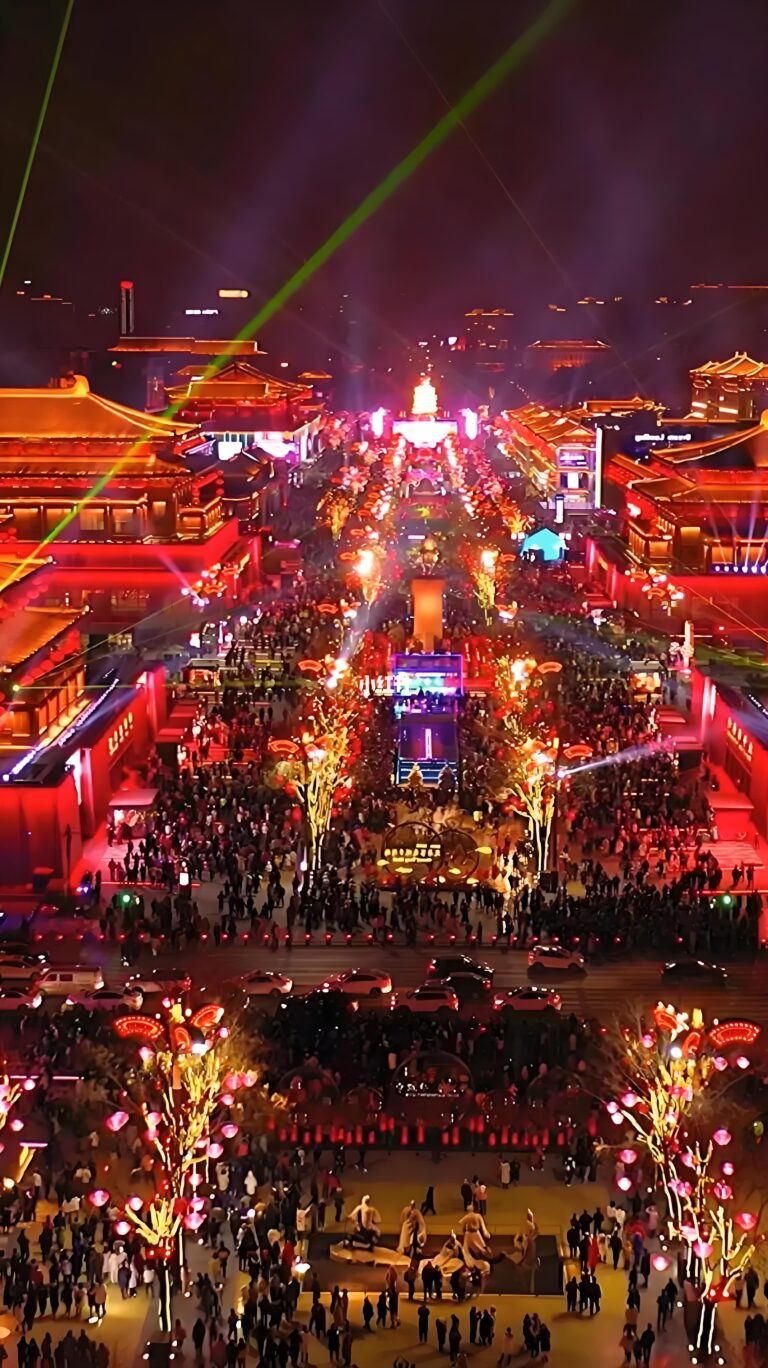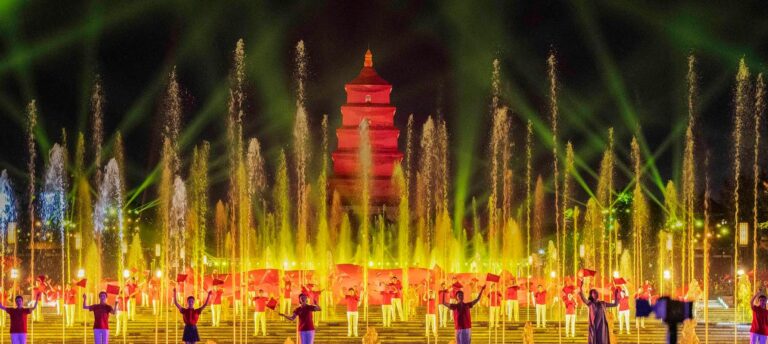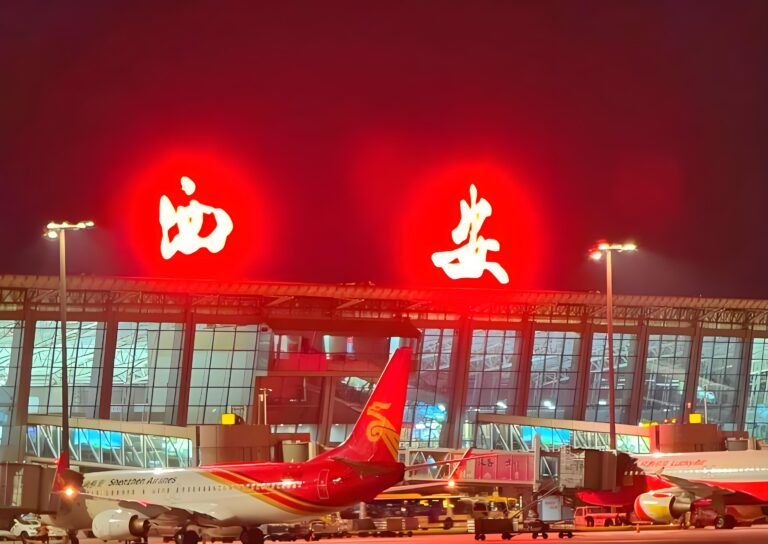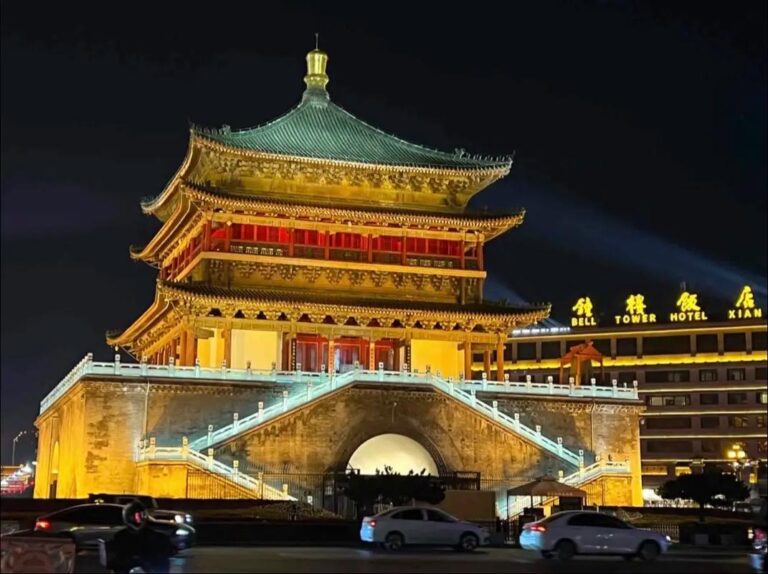What language is spoken in Xi’an?
What Language Do They Speak in Xi’an? A Zero-Stress Communication Guide for American Travelers!
Hey friends! Packing for your Xi’an adventure to see the Terracotta Warriors and ancient city walls? You’re probably wondering: “What language do people speak in Xi’an? Can I actually get by with just English?”
This is a super practical and important question! Don’t worry. Let me, your “communication guide,” give you the straight truth: Getting around Xi’an is absolutely possible! While challenges exist, with a few key tools and tricks, your trip will be smooth sailing. Get ready to crack Xi’an’s language code!
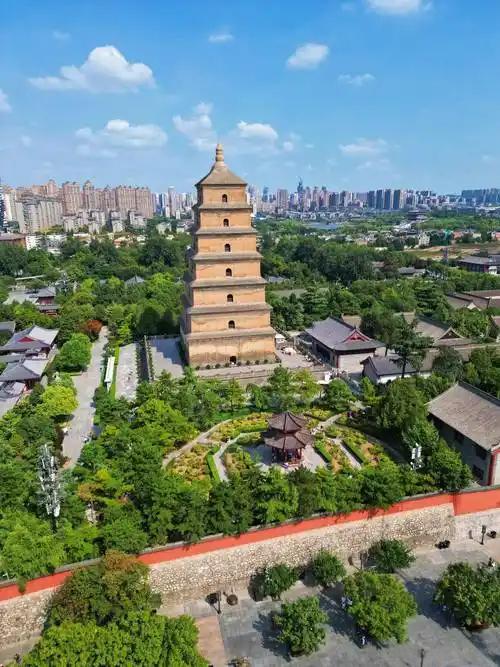
The Core Answer: The Official Language is Mandarin Chinese
- The National Standard: Like every city in China, the official language used in schools, government, TV, radio, and daily public life in Xi’an is Mandarin Chinese (Pǔtōnghuà). Think of it like “General American English” – it’s the common tongue everyone uses to communicate across the country.
- The Written Form: Chinese Characters (Hànzì): All signs, street names, menus, and official documents use Chinese characters. This is a completely different writing system from English letters.
- What This Means For You: If you want to learn a few basic travel phrases, learn them in Mandarin! That’s the most useful language here.
The Local Flavor: Shaanxi Dialect (Guānzhōng Huà)
- What’s a Dialect?: Just like the Southern accent in the US or the distinct Boston accent, Shaanxi Province (especially Xi’an and the surrounding Guanzhong plain) has its own ancient dialect called Shaanxi Dialect or Guanzhong Hua.
- Is It Very Different from Mandarin? Yes, noticeably! The main differences are in pronunciation, tone, and some vocabulary. For example:
- Mandarin “Zhīdào” (to know) might sound like “Zībūdào” or have a distinct local lilt like “Zhīdào lie” in Shaanxi dialect.
- Mandarin “Gàn shénme?” (What are you doing?) often becomes “Nòng shá ne?”.
- The tones might sound “flatter,” “sharper,” or faster-paced to your ear.
- Do Tourists Need to Worry About the Dialect?
- In Core Tourist Areas: Almost Never! Staff at the Terracotta Warriors Museum, major attractions, hotels, large malls, chain restaurants, and younger people generally speak standard Mandarin. They deal with tourists constantly and are used to communicating clearly.
- In Local Life, You Might Hear It: If you venture into very local neighborhood eateries, traditional wet markets, or chat with older locals (like grandpas playing chess in the park), you might encounter thick Shaanxi dialect. Does it sound like a different language? Don’t panic! Read on for solutions.
The Big Question: How Common is English?
Let’s be honest:
- Overall Penetration: Limited. Unlike major European tourist hubs or cities like Hong Kong/Shanghai, Xi’an, as an inland historical city, has a general population (especially older people) with generally low English proficiency. Don’t expect random people on the street to answer your questions fluently in English.
- Tourism & Hospitality: Much Better!
- International Hotels: Front desk and concierge staff are required to speak fluent English. Zero barriers.
- Major Attractions: Ticket offices, information desks, and official tour guides at the Terracotta Warriors, Shaanxi History Museum, City Wall, Big Wild Goose Pagoda, etc., usually have basic to intermediate English skills. Major signs (Exit, Toilet, Ticket Office) almost always have English.
- Tour Companies & Guides: Professional English-speaking guides are readily available! Hiring one is one of the best solutions for language barriers (more below).
- Airport & Train Stations: Information desk staff and international counter staff have good English. Key signs are bilingual.
- Larger/Chain Restaurants: Upscale places, international chains (Starbucks, McDonald’s), and some popular mid-range restaurants often have English menus. A few servers might understand basic food words (“water,” “beef noodle,” “bill please”).
- University Students / Young People: More likely to have studied English and be willing to try using simple English or gestures to help, especially near universities or trendy areas.
- Street Vendors, Taxi Drivers, Local Hole-in-the-Wall Eateries: Communicating in English is very difficult, often impossible. Be prepared with other tools!
Don’t Panic! Your Essential Communication Toolkit
Knowing the challenges, here are your powerful solutions:
- Translation Apps are Your BEST FRIEND! (Seriously, Download These NOW):
- Top Picks:
- Google Translate (Essential!): Key lifesaving features:
- Conversation Mode: Open the mic. You speak English, the app speaks Mandarin aloud. They speak Mandarin, you see/hear the English translation instantly. Game-changer!
- Camera/Photo Translate: Point your camera at a menu, sign, or label. The app instantly overlays the English translation! Order food, read signs like a pro.
- Handwrite Input: If someone doesn’t know Pinyin (Romanized spelling), they can handwrite the character on your screen for translation.
- Baidu Translate: A strong Chinese alternative. Sometimes understands local context/slang better. Similar features.
- Google Translate (Essential!): Key lifesaving features:
- Crucial Tips:
- Download Offline Language Packs BEFORE You Go! (Mandarin Chinese). Vital if your mobile data is slow or Google is spotty (it sometimes is in China).
- Practice Before You Fly: Spend 10 minutes learning how Conversation and Camera modes work.
- Keep Your Phone Charged! Carry a power bank.
- Top Picks:
- Body Language & Smiles: The Universal Language!: Point at menu pictures or items. Use gestures for numbers (bargaining), eating, drinking, paying. Show pictures on your phone of your destination or hotel. A friendly smile and a simple “Nǐ hǎo!” (Hello!) go a long way. Patience and kindness bridge many gaps!
- Prepare Key Info IN CHINESE Characters:
- Your Hotel Name & Address: Get this written clearly in Chinese characters by the hotel front desk. Keep a physical card AND a photo on your phone. Show this to taxi drivers!
- Major Destinations: Have the Chinese characters for “兵马俑 Bīngmǎyǒng” (Terracotta Warriors), “陕西历史博物馆 Shǎnxī Lìshǐ Bówùguǎn” (History Museum), “钟楼 Zhōnglóu” (Bell Tower), “回民街 Huímínjiē” (Muslim Quarter), “机场 Jīchǎng” (Airport), “火车站 Huǒchē Zhàn” (Train Station) saved in your phone notes or written down.
- Dietary Needs (If Any): Have key phrases like “不吃猪肉 Bù chī zhūròu” (No Pork / Halal), “素食 Sùshí” (Vegetarian), “过敏:花生 Guòmǐn: Huāshēng” (Allergy: Peanuts) translated and saved/printed.
- Use Map Apps Wisely (Baidu Maps / Amap): These apps have English interfaces. Search for places in English (e.g., “Terracotta Warriors”), and it will show the Chinese name and route. You can show the driver the app’s navigation screen or destination name. Also great for checking bus/subway routes.
- Hire an English Guide or Join an English Tour:
- This is the MOST hassle-free and enriching option! Especially for history-heavy places like the Terracotta Warriors or Shaanxi History Museum, a professional English guide brings the stories to life. Book through your hotel, a local travel agency, or platforms like Trip.com (Ctrip).
- Joining an English-language day tour also solves transport and commentary.
- Learn a Handful of Essential Mandarin Phrases:
- No fluency needed! These basics show goodwill and can really help:
- 你好! Nǐ hǎo! – Hello! (Knee how)
- 谢谢! Xièxie! – Thank you! (Shieh-shieh) Say this often!
- 不客气。 Bú kèqì. – You’re welcome. (Boo kuh-chee)
- 再见。 Zàijiàn. – Goodbye. (Zai-jee-en)
- 是的。 Shì de. – Yes. (Shir duh)
- 不是。 Bú shì. – No. (Boo shir)
- 请问… Qǐng wèn… – Excuse me, may I ask…? (Ching wuhn…) Use this politely before asking anything.
- 这个多少钱? Zhège duōshao qián? – How much is this? (Juh-guh dwor-shaow chen?)
- 厕所在哪里? Cèsuǒ zài nǎlǐ? – Where is the toilet? (Tsuuh-swor zai nah-lee?)
- 我不会说中文。 Wǒ bú huì shuō Zhōngwén. – I don’t speak Chinese. (Wuh boo hway shwor Jong-wuhn)
- 请说慢一点。 Qǐng shuō màn yīdiǎn. – Please speak slowly. (Ching shwor mahn ee-dee-en)
- 我不明白。 Wǒ bù míngbai. – I don’t understand. (Wuh boo ming-bye)
- 菜单? Càidān? – Menu? (Tsai-dahn?)
- 买单/结账。 Mǎidān / Jiézhàng. – Check/Bill, please. (My-dahn / Jee-eh-jahng)
- No fluency needed! These basics show goodwill and can really help:
Communication Strategies by Scenario
- Airport/Train Station/Hotel: Relatively easy. Use English confidently, backed up with your prepared Chinese address info. Staff are generally equipped to help.
- Taxi / Didi (Ride-Hailing): Requires Most Prep! Use Didi App whenever possible (English interface, enter destination in English). For regular taxis, ALWAYS show the driver the destination written clearly in Chinese characters (on paper or your phone). Have your translation app or simple gestures ready for discussing fare/route.
- Restaurants:
- With an English Menu: Point and order.
- Chinese Menu Only: Bring out the Big Guns! Use Google Translate Camera Mode instantly! Or see what looks good on other tables and point, saying “这个 Zhège” (This one). Restaurants with picture menus or open kitchens are easier. Smiles and pointing are key!
- Attraction Ticket Offices / Shops: Major sites usually have basic English. For shopping, use your phone’s calculator to show numbers when bargaining, or say “太贵了 Tài guì le” (Too expensive – Tie gway luh).
- Asking for Directions: Try asking younger people first. Point to your destination on your map app, use gestures, and say “请问…在哪里? Qǐng wèn… zài nǎlǐ?” (Excuse me, where is…?). Or simply show them the Chinese name of your destination.
Cultural Nugget: A Bit About the Language
- The “Zhōng” in China & Shaanxi: Shaanxi is a cradle of Chinese civilization. The “Zhōng” (中) in “Zhōngguó” (China) means “middle” or “center,” and the Guanzhong plain around Xi’an was historically considered the very center of the known world (“All Under Heaven”). Hearing “zhong” sounds? It connects to this deep history!
- Dialect in the Food: The names of many famous Xi’an dishes reflect local dialect or ancient roots. That crazy-complex character for “Biang Biang Noodles”? It’s said to mimic the sound of the dough being slapped on the counter while making the noodles! Food names are part of the linguistic adventure.
- Patience & Friendliness Prevail: As an ancient capital and major tourist city, Xi’an locals are generally welcoming and patient with visitors. Even with language difficulties, a friendly attitude and a smile will usually be met with genuine efforts to understand and help you.
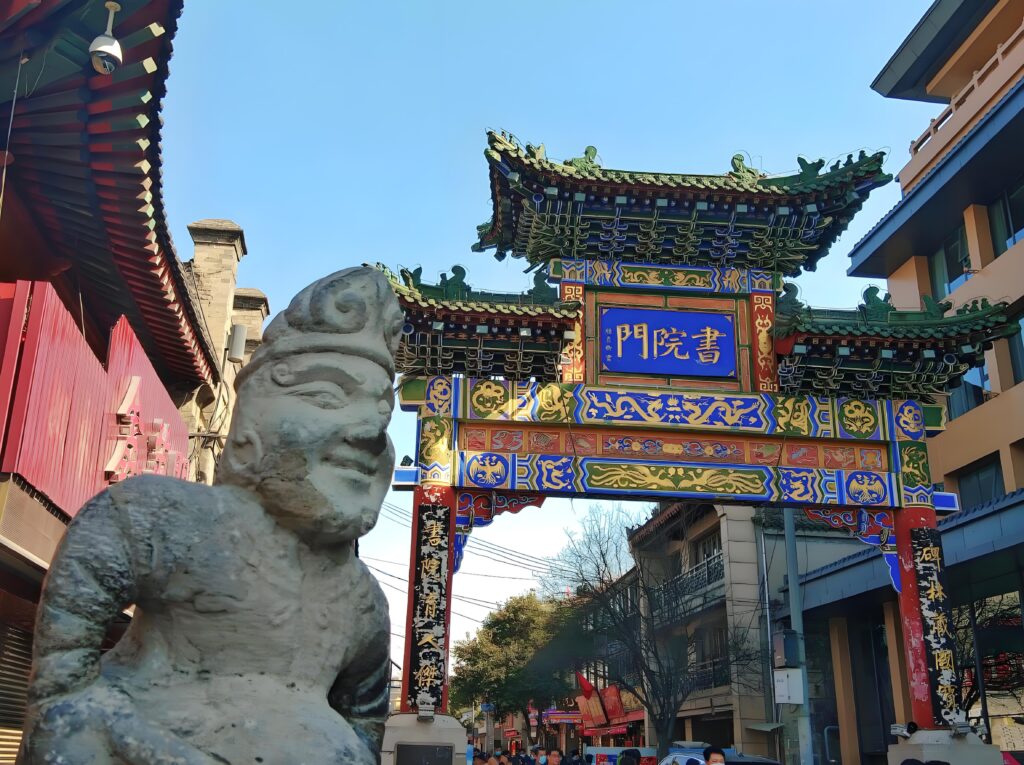
So, What Language Do They Speak in Xi’an? The Recap
- Official Language: Mandarin Chinese. This is the foundation.
- Local Flavor: Shaanxi Dialect. Heard more in local life, less in tourist zones.
- English Proficiency: Functional in the tourist core (hotels, major attractions, guides), but limited overall. Don’t rely on strangers speaking English.
- Your Survival Kit:
- Translation Apps (Especially Google Translate!) are your MVP! Master Conversation and Camera modes.
- Prepare Key Info in Chinese Characters (Addresses, Places)! Non-negotiable for taxis.
- Use Body Language & Smile Generously!
- Learn a Few Essential Mandarin Phrases! Shows respect and helps in a pinch.
- Consider Hiring an English Guide! Maximizes understanding and ease.
- Use Map Apps (Baidu/Amap)! For navigation and showing destinations.
Remember, a language barrier isn’t a stop sign for adventure – it’s an invitation to connect in new ways! Arm yourself with your phone (loaded with apps), a dash of courage, and a big smile, and set off for Xi’an with confidence. You’ll discover that the warmth of the people, the awe of the ancient sites, and the magic of the city transcend words and create unforgettable memories. Enjoy your conversations and your incredible journey in Xi’an! Have a fantastic trip!

